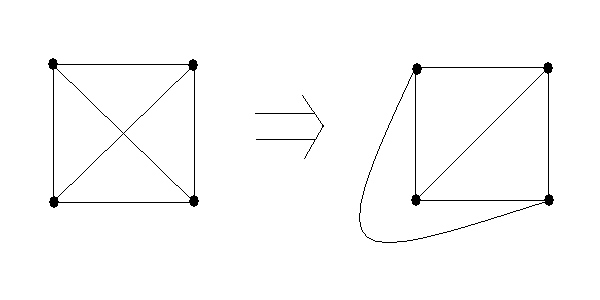Graph Isomorphism
The graph isomorphism problem has a long history in the fields of computer
science, mathematics and chemistry. Graph isomorphism is very important due
to its practical applications and its unique complexity theoretic status .
Informally, graph isomorphism is to check if two graphs that look different are
actually the same. More formally, given two graphs does there exist a 1-to-1
mapping of vertices in one graph onto the vertices of other such that edges
and non-edges are preserved?. Example of two isomorphic graphs is given below

A more interesting example is below

Some of the applications of Graph Isomorphism are verification of computer programs, Security, for example fingerprint scanners, facial scanners etc. The problem is in class NP (nondeterministic polynomial time) mean given a solution (bijective mapping) you can verify the solution efficiently.
Easy Math Editor
This discussion board is a place to discuss our Daily Challenges and the math and science related to those challenges. Explanations are more than just a solution — they should explain the steps and thinking strategies that you used to obtain the solution. Comments should further the discussion of math and science.
When posting on Brilliant:
*italics*or_italics_**bold**or__bold__paragraph 1
paragraph 2
[example link](https://brilliant.org)> This is a quote# I indented these lines # 4 spaces, and now they show # up as a code block. print "hello world"\(...\)or\[...\]to ensure proper formatting.2 \times 32^{34}a_{i-1}\frac{2}{3}\sqrt{2}\sum_{i=1}^3\sin \theta\boxed{123}Comments
Can the graph isomorphism problem be solved in polynomial time?
Log in to reply
till now no one is able to solve the problem in polynomial time in general (For some special class of graphs it is solvable in polynomial time like for trees)
Log in to reply
Note: Laszlo Babai showed last year that Graph Isomorphism is in Quasipolynomial-time.